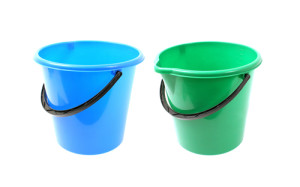 South Carolina’s Supreme Court in 2003 laid out how workers’ compensation subrogation really works in that state. In Breeden v TCW/Tennessee Express, the court surprised everyone with a rational, solid ruling. In what we like to refer to as the “Two-Bucket” approach to subrogation, the court first set down how South Carolina’s mysterious “cognizable damages” were to be recognized with subsequent awards or judgments prorated between injured worker and employer/insuror according to a simple formula. But then the court moved on into unexplored territory holding that there was also the requirement that the injured employee fund a trust account from remaining funds to cover anticipated future indemnity and medical benefits. AND the court went on, this future benefit trust fund to be managed by the employer/insurer was NOT subject to those onerous cognizable damages. What does all of this mean in the real world? Well, it points to the conclusion that when dealing with a SC workers’ compensation claim where there is clear third party recovery with adequate policy limits or other financial assets, care should be given in approaching any clincher settlement of the underlying compensation claim. It will better to try to minimize the amount of “lien” money, i.e., money paid out in actual compensation benefits. This money is subject to cognizable damages, or any damages that can be proven to be due the employee. Leaving the future open until the third party settlement occurs means that not only do you not have to pay out extra sums, but you can require a full and complete release in addition to repayment, albeit with adjustment for those “cognizable damages” of your existing lien. That lien, so this case says, equals amounts you have paid at the time of settlement of the third party claim. Once settlement of the third party claim occurs, and unless you are freely given that full release on the comp claim, the injured employee must pay you an amount equal to the total estimated future benefits, both indemnity and medical! So, to repeat, you want to minimize benefit payments by not including any lump sum settlement money that goes into that “Lien Bucket”. Instead, plug in those estimated amounts down the road into your “Future Benefits Bucket” and take that in the form of the trust payment right off the top of the remaining award or judgment. It is a game-change when it comes to how you settle some claims in that state.
South Carolina’s Supreme Court in 2003 laid out how workers’ compensation subrogation really works in that state. In Breeden v TCW/Tennessee Express, the court surprised everyone with a rational, solid ruling. In what we like to refer to as the “Two-Bucket” approach to subrogation, the court first set down how South Carolina’s mysterious “cognizable damages” were to be recognized with subsequent awards or judgments prorated between injured worker and employer/insuror according to a simple formula. But then the court moved on into unexplored territory holding that there was also the requirement that the injured employee fund a trust account from remaining funds to cover anticipated future indemnity and medical benefits. AND the court went on, this future benefit trust fund to be managed by the employer/insurer was NOT subject to those onerous cognizable damages. What does all of this mean in the real world? Well, it points to the conclusion that when dealing with a SC workers’ compensation claim where there is clear third party recovery with adequate policy limits or other financial assets, care should be given in approaching any clincher settlement of the underlying compensation claim. It will better to try to minimize the amount of “lien” money, i.e., money paid out in actual compensation benefits. This money is subject to cognizable damages, or any damages that can be proven to be due the employee. Leaving the future open until the third party settlement occurs means that not only do you not have to pay out extra sums, but you can require a full and complete release in addition to repayment, albeit with adjustment for those “cognizable damages” of your existing lien. That lien, so this case says, equals amounts you have paid at the time of settlement of the third party claim. Once settlement of the third party claim occurs, and unless you are freely given that full release on the comp claim, the injured employee must pay you an amount equal to the total estimated future benefits, both indemnity and medical! So, to repeat, you want to minimize benefit payments by not including any lump sum settlement money that goes into that “Lien Bucket”. Instead, plug in those estimated amounts down the road into your “Future Benefits Bucket” and take that in the form of the trust payment right off the top of the remaining award or judgment. It is a game-change when it comes to how you settle some claims in that state.
Phone: (225) 769-5535 | E-Mail: support@rsicentral.com
South Carolina’s Two-Bucket Approach to Workers’ Comp Subrogation!
November 30, 2014
by admin
Comments are off
Social Share
News You Can Use
Contact Us
RSI Central7384 Highland Road Baton Rouge, LA 70808
Phone: 225.769.5535
After Hours: 225.773.0902
Fax: 225.769.5585
E-Mail: support@rsicentral.com
Search Our Website
COPYRIGHT 2025. RSI CENTRAL INC. ALL RIGHTS RESERVED.




